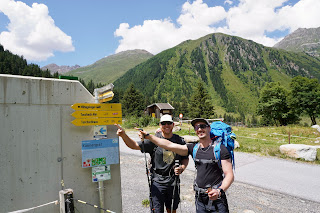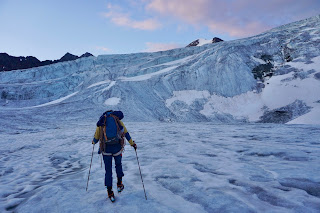Do you fancy some pre-Easter sea kayaking in the mediterranean, good food & vino after a grim Scottish winter? Then join Ana and me for the 2027 Paigaia (=sea kayak club) sea kayak symposium! We would love to see some Taysiders there...
This is a write up of the 2025 sea kayak symposium that we attended so that you can get an idea. Do not hesitate to ask Ana or myself if you have questions. We are actually now members of the Pagaia club.
Llançà is a wee coastal city on the Costa Brava ("wild coast") just south of the border to France and north of the Cap de Crues (https://en.wikipedia.org/wiki/Cap_de_Creus) peninsula and national park. Every second year they organise a sea kayak symposium in the week before Easter. This year Ana and I took part. We highly recommend it if you want to paddle in typically good mediterranean weather and want to meet fellow paddlers from all over Europe (=Bretagne/France, Italy, Germany, Spain).
Travel: a) By plane: Fly to Barcelona or Girona and then take a rental car which is cheap (we paid 200 EUR for 2 weeks). You can hire sea kayaks in Llançà. b) By car & ferry: There are many car & ferry combinations and the advantage is that you can take your own kayak. However, if the ferry goes to San Sebastian then you must still drive many miles to Llançà.
Accomodation: The Pagaia sea kayak club offers free camping (rustic in the dust, noisy but fun, place for camper vans, non-luxury facilities of a sports club, most folks do this). There is also a camp site in town plus plenty of holiday lets plus hotels. Costs are moderate as it is pre season.
Kayak rental: Available in Llançà and at other places. No problem to attend the symposium without your own kayak.
Impressions: Below are some images from the symposium. There are close to 200 participants and instructors from Wales (Nigel Dennis came with 10 of his kayaks and several instructors), Germany, Netherlands, Spain and France. The Mediterranean is non-tidal but expect the tramontana wind that blows down from the Pyrenees some days. The coast is beautiful with a mix of beaches and rocky bits but there is little wildlife (we saw some sun fish though) and there are no islands. Nonetheless, the good weather and the international, middle-aged crowd makes up for it. The first three days of the symposium were skills (you can book groups that develop specific skills) followed by four days of tours.
We had 2 overcast days, one rainy day and the rest was sunny. Generally the 2025 spring was wet for Catalunya (in Scotland it would have been considered as dry). The locals are happy about rain because Catalunya is just recovering from a draught due to several years of very little rain.
Here is our wee Fiat 500 and Ana sorting out kit. There is lots of parking
and here is a group discussing the plans for the session or trip.

Here we leave Llançà harbour for a trip towards Cap de Creus. I think we saw two sun fish during this trip.
Here is Ana as part of a Spanish-Belgian-Dutch-German team during a navigation exercise
During the three training days, people could leave their kayak on the beach. The club had organised security to look after the kayaks over night.
Here is folks landing after exercises.
Cap de Creus has dramatic rock formations but unfortunately no sea caves.
Landing on a beach in the Cap de Creus national park.
Blue water during the lunch break. You could book your lunches and breakfast which we did. It made things super easy.
And finally: Nigel Dennis with the 22 kayaks that he built and transported all the way from Wales.
Other things to do? Of course, this is Catalunya. Many places for sightseeing, shopping, good food & drink. If you into cycling bring your bike. There are also many great walks.
Here are some ideas:
Barcelona: Just 200 km away, you can go by car or train. Gaudi architecture etc etc. Just buy a Barcelona guide.
Girona: Just 62 km away. medieval city and the home of many professional cyclists. A tour de France winner overtook me on Christmas eve twice!
Figueres: The town of Salvatore Dali with a Dali museum is right around the corner.
Pyrenees: They start near Llançà but the high Pyrenees will be snow capped around Easter. It is a beautiful sight coming from the coast and seeing the Pyrenees in the distuance. Great for walks.
Cadaques: Arty town just a short drive away.
Calella, Llafranc, Tamariu, Roses, Pals, Tossa de Mar: There are many beautiful villages and wee towns on the Costa Brava which starts at Blanes and goes to the French border.
Ana and I hope to sea a large Scottish delegation at the 2027 Llançà sea kayak symposium! Pencil the pre-Easter week into your calendar now. Do not hesitate to ask us if you have quesitons.
HW






























